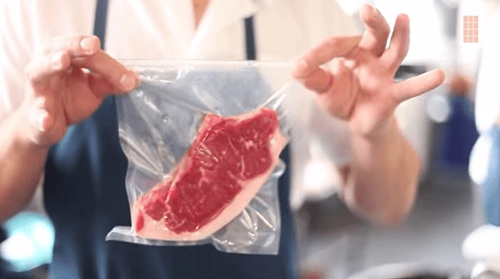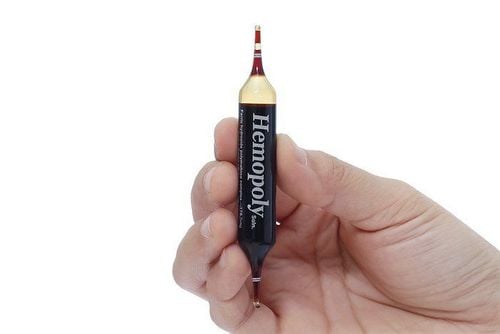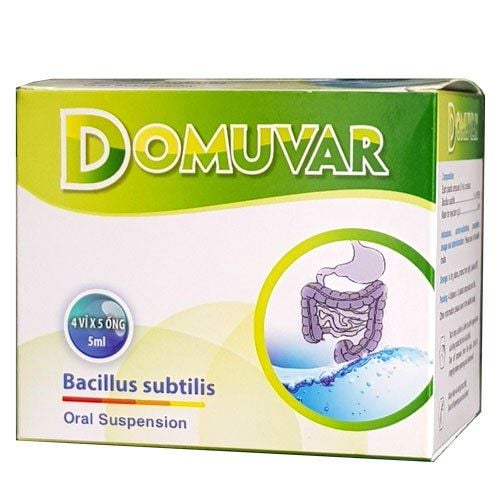This is an automatically translated article.
Iron deficiency anemia is considered the most common form of nutritional anemia in children. However, this disease is completely preventable when parents have certain knowledge about how to care for their iron-deficiency anemia at home, starting from the simplest step of choosing healthy foods rich in nutrients. nutrition for children in each meal or iron supplements.
1. Iron supplement for children
To successfully care for children with iron deficiency anemia from infancy and infancy, it is necessary to determine the appropriate dose and schedule of oral iron therapy in parallel with the application of dietary adjustments. with iron supplementation and monitoring of response to therapy.
The recommended dose for oral supplementation for infants and children with iron deficiency anemia is 3–6 mg/kg/day elemental iron. The generally recommended dose of ferrous sulfate for children is 3 mg/kg of iron once or twice daily (maximum total daily dose, 150 mg of elemental iron). Elemental iron accounts for 20% of ferrous sulfate. Ferrous fumarate and ferrous gluconate are other forms of oral iron salts with varying levels of elemental iron. Iron tablets should be given between meals and preferably with juice because absorption of iron sulfate is increased when taken with juice rather than with milk or other liquids. Another way to maximize iron absorption is to take it 30–45 minutes before a meal or 2 hours after a meal.
Side effects when giving iron pills to children are gastrointestinal intolerance in high doses, graying of teeth and gums (especially when used as a liquid preparation), sometimes even It affects the immune system and makes it easier to get infections.
2. Change your diet
Dietary changes are necessary not only to prevent iron deficiency and to supplement oral iron therapy, but also as a basic principle in the care of malnourished children. The following dietary changes are recommended for infants and children with diagnosed iron-deficiency anemia:
Newborns should not be fed unadulterated cow's milk or high-fat formula. low iron. If the infant is not breastfed or partially breastfed, iron-fortified formula should be given to the infant. Cow's milk-fed infants may develop iron deficiency from intestinal blood loss caused by cow's milk protein-induced colitis. Lack of iron supplements in cow's milk will contribute to iron deficiency.
When iron deficiency is detected or suspected in children over 12 months, cow's milk intake should be limited to 600 ml/day. Drinking a lot of cow's milk can increase the risk of iron deficiency. Furthermore, weaning of bottle-fed babies is also encouraged. If iron-deficiency anemia persists and stool tests are positive for blood, all dairy products should be discontinued. In these cases, the child needs to get an appropriate amount of calcium in the diet (calcium-rich foods).
Besides, parents should also modify the child's diet to increase the amount of iron that can be absorbed through the digestive tract. Infants 6 months of age and older need to get the right amount of iron from solid foods. The diet should include iron-fortified cereals, foods rich in vitamin C, and pureed meats.
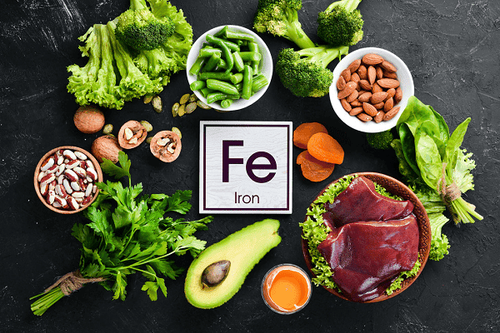
Chăm sóc trẻ thiếu máu thiếu sắt bằng cách thay đổi chế độ ăn uống hàng ngày
3. Monitoring response to treatment
The effectiveness of iron supplementation in the care of an iron-deficient anemic child requires periodic follow-up assessment to confirm that the anemia is due to iron deficiency alone and that treatment is carried out with doses and exact time. After 4 weeks of treatment, the child should have a complete blood count again. In addition, children should be evaluated for iron-deficiency anemia when they are otherwise healthy and free from viral infections that can cause acute hemoglobin depletion.
If hemoglobin increases by at least 1 g/dl after 4 weeks of oral iron supplementation, treatment should be continued and hemoglobin re-evaluated every 2-3 months until hemoglobin reaches normal values. Iron therapy should be continued for an additional 2-3 months to replace iron stores. Abrupt discontinuation of treatment may lead to recurrence of iron-deficiency anemia.
If the child with iron-deficiency anemia does not have an adequate response after 4 weeks of treatment, further evaluation for anemia should be made. Possible causes of persistent or recurrent iron deficiency anemia are ineffective treatment, blood loss, malabsorption, or incorrect diagnosis. Parents should consult a doctor to see if iron preparations have been used at the appropriate dose and time, and whether changes in the child's diet have been sufficient.
4. Consider parenteral iron therapy
Parenteral iron therapy is reserved for patients with severe iron deficiency anemia who are intolerant to oral preparations, respond poorly to oral supplementation, have poor adherence, or are malabsorption. .
The target population is usually children with chronic gastrointestinal conditions such as inflammatory bowel disease that may require parenteral iron therapy, as they are often intolerant of oral iron supplements.
5. Consider giving blood transfusion
Blood transfusions are rarely ordered in children with iron deficiency anemia. A blood transfusion is not considered necessary even with a hemoglobin level of 4–5 g/dl if the child still appears healthy.
Blood transfusions should only be given when there is an urgent need to restore oxygen-carrying capacity, i.e. in cases of severe decompensated anemia. Meanwhile, iron-deficiency anemia alone usually progresses gradually and over long enough to allow compensatory mechanisms to maintain intravascular volume.
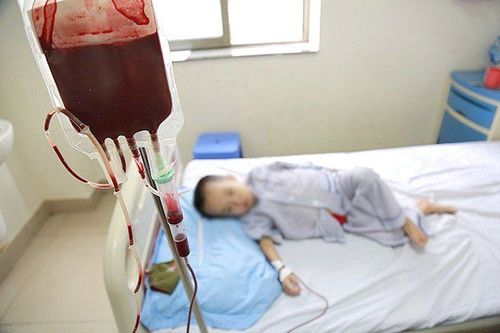
Ngoài chăm sóc trẻ thiếu máu thiếu sắt thì việc truyền máu có thể được cân nhắc ở một số trẻ
6. Precautions when taking care of children with iron deficiency anemia
Many recommendations for the prevention of iron-deficiency anemia agree with widely used approaches including the inclusion of iron-fortified foods in the infant's diet, the feeding of infants with high-nutrient formula iron, giving cow's milk only from 12 months of age, screening for iron deficiency and iron prophylaxis in infants.
Accordingly, infants who are not breastfed should receive adequate iron from iron-fortified formula. Meanwhile, breastfed infants should receive a supplemental source of iron in the form of iron supplements or complementary foods in the following dosages:
Full-term breastfed infants should receive iron from the age of 4 months age (1 mg/kg/day, up to 15 mg) until the child has enough iron-rich supplements in the diet. Preterm breastfed infants should receive iron supplements starting at 2 weeks of age (2-4 mg/kg/day, up to 15 mg) throughout the first year of life (as a supplement or fortified formula). iron). Starting at 6 months of age, infants should be given a meal rich in vitamin C (green vegetables, fruits and juices) daily to enhance iron absorption. After 6 months of age, meat should be added to the child's diet as part of the care of malnourished children in general and iron-deficiency anemia in particular. Heme iron in meat and fish has a higher biological value than nonheme iron in vegetables and cereals. At the same time, combining heme foods with nonheme foods also increases the absorption of iron through the intestinal tract.
Cow's milk should not be given to infants until they are 12 months old. The higher concentration of calcium in cow's milk inhibits iron absorption. Children 1–5 years old should drink less than 600 ml of milk per day. Therefore, taking care of a malnourished 4-year-old child is not as simple as drinking a lot of milk. In addition, children should have enough iron-containing foods to meet their daily iron needs. Children who don't eat at least 2 or 3 iron-rich foods per day may not have enough iron and may need oral iron supplements.
In summary, iron plays an essential role in many physiological functions of the body and iron deficiency anemia is the most common nutritional deficiency in the world. The care of iron-deficient anemia children should be started early from the fetal stage, breastfed infants, fortified foods with iron in weaning meals and avoiding cow's milk before 1 year of age. At the same time, children should have regular blood tests between 9-12 months of age, as the most valuable screening tool and recommend iron supplementation for children with risk factors for iron deficiency.
Please dial HOTLINE for more information or register for an appointment HERE. Download MyVinmec app to make appointments faster and to manage your bookings easily.




